General Boundary Layer Characterisitcs
The Final Exam
The final exam will be open between April Wednesday April 24th and Thursday April 25th. It will be completed asynchronously over canvas.
- The exam will not be timed. It is not intended to take longer that a normal exam period (250 minutes), but I want you to have more time if you need it.
- The exam will be open for 48 hours starting at 8 AM Wednesday April 24th
- Late submissions will not be accepted. If you experience extenuating circumstances, contact me before the exam period closes
- The exam will be open for 48 hours starting at 8 AM Wednesday April 24th
- The final is cumulative; any topics from the course are fair game. Similar to the midterm:
- A collection of multiple choice, fill in the blanks, matching etc. (~50%)
- Problem set + short answer questions (~50%)
Learning Objectives
- Describe how the ABL responds to the surface energy balance over a day.
- Explain how sensible heat is mixed and distributed in the ABL (i.e. mixed layer growth and entrainment processes.)
- Describe how moisture is mixed in the ABL.
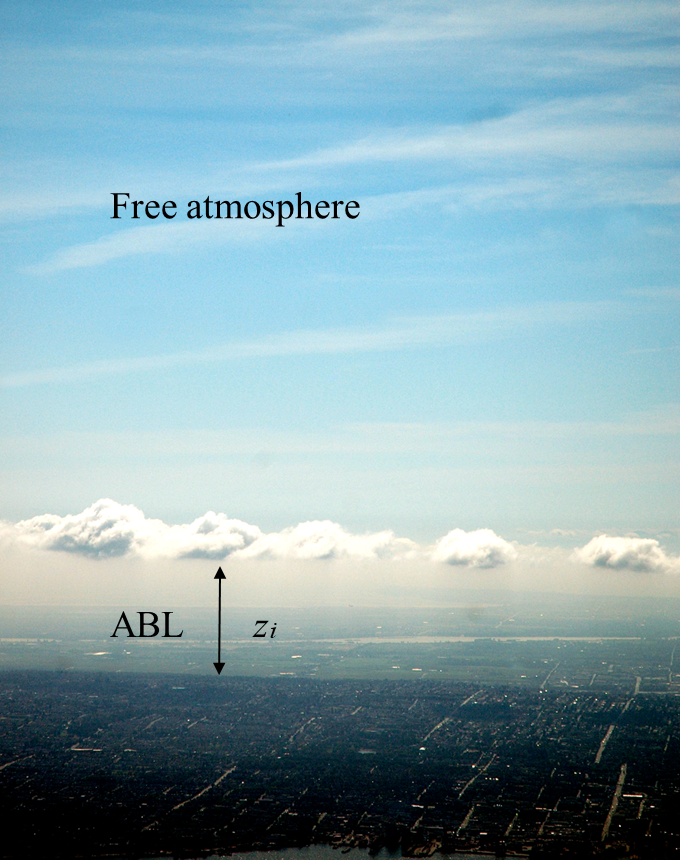
Review (iClicker)
Name the layer of the atmosphere from the surface to the level where the frictional influence of the surface is absent.
- A Atmospheric boundary layer
- B Residual layer
- C Troposphere
- D Laminar boundary layer
Convective Boundary Layer (CBL)
- Thermal plumes, convection cells and roll structures.
- Surface layer, mixed layer and entrainment zone.
- Deep, well mixed temperature profiles.
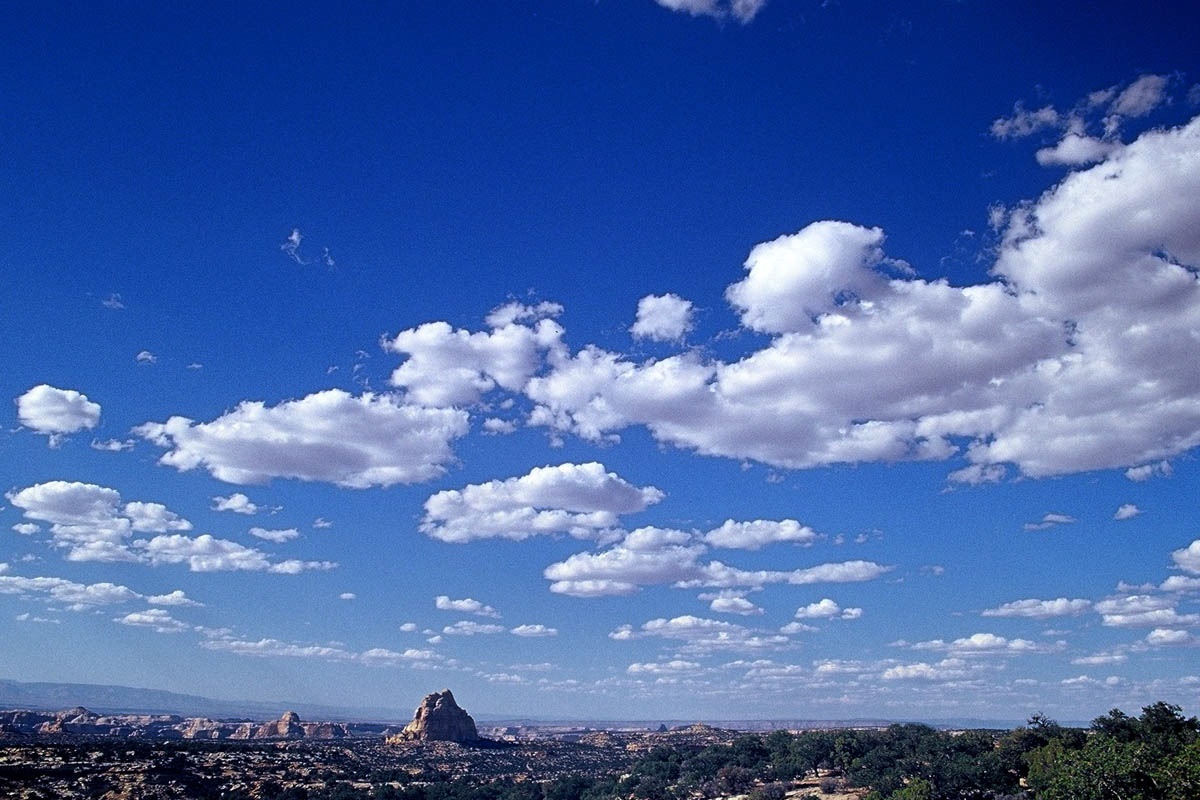
Stable Boundary Layer (SBL)
- Inversion close to the ground, growth during night
- Stable layer close to ground and residual layer above
- Waves
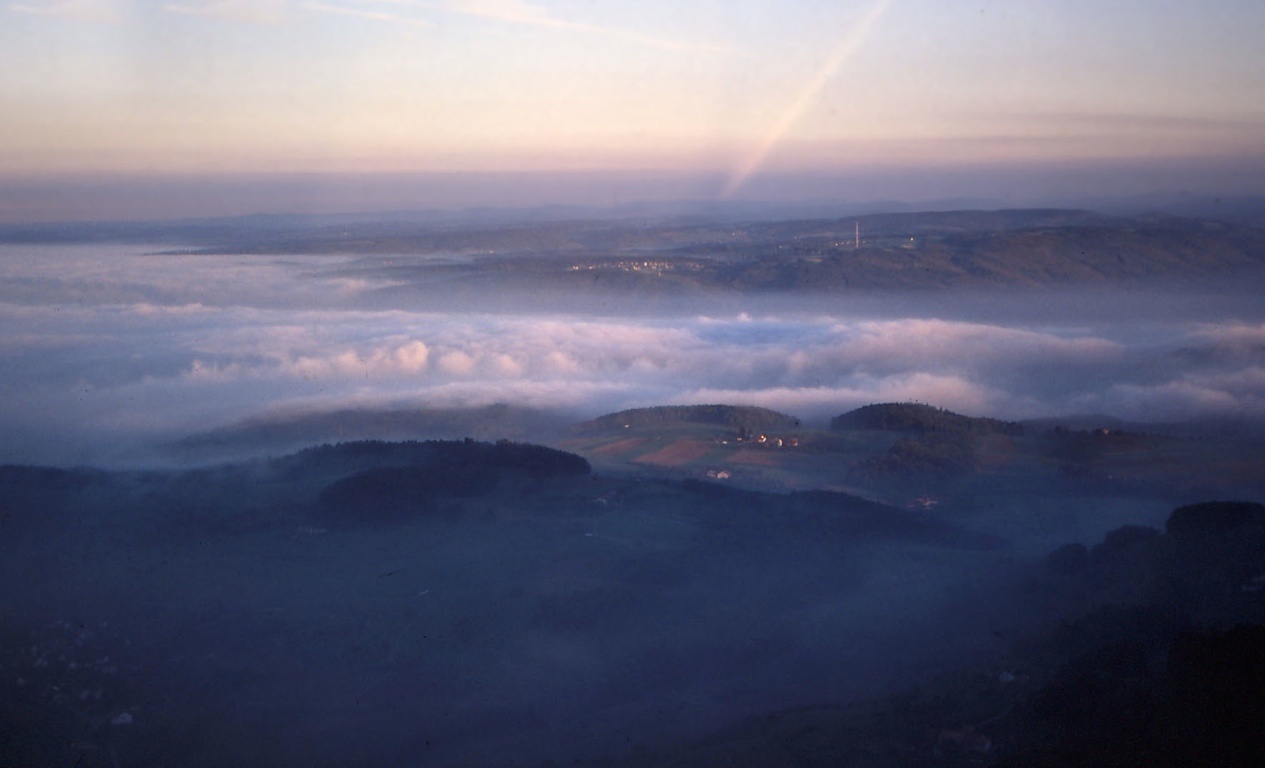
Thermal structure of ABL

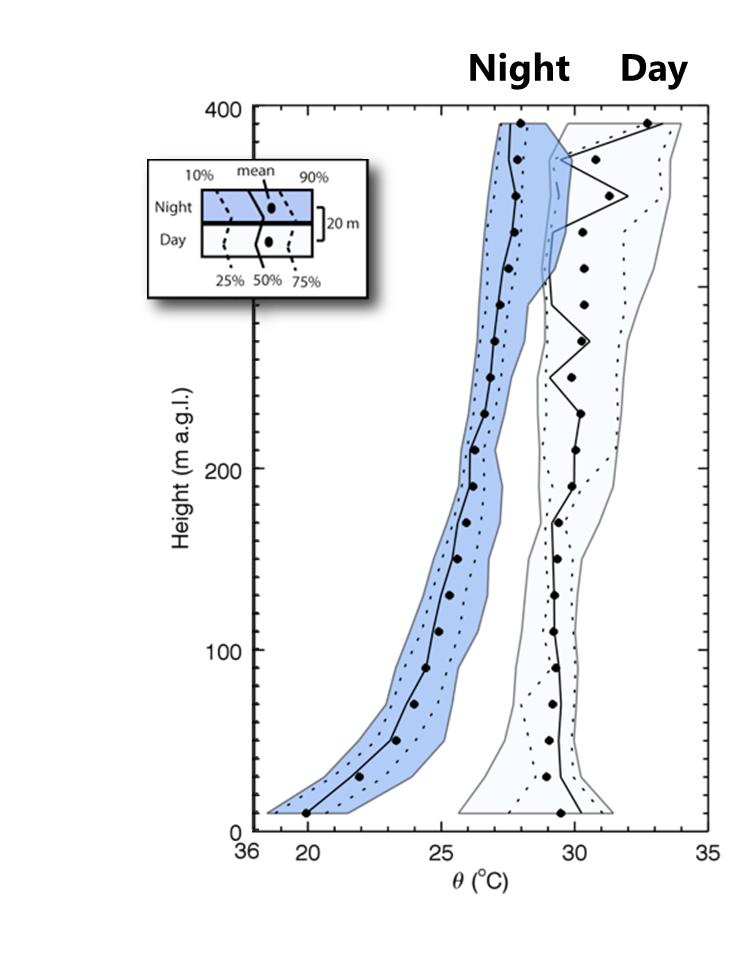
Diurnal Course of the ABL
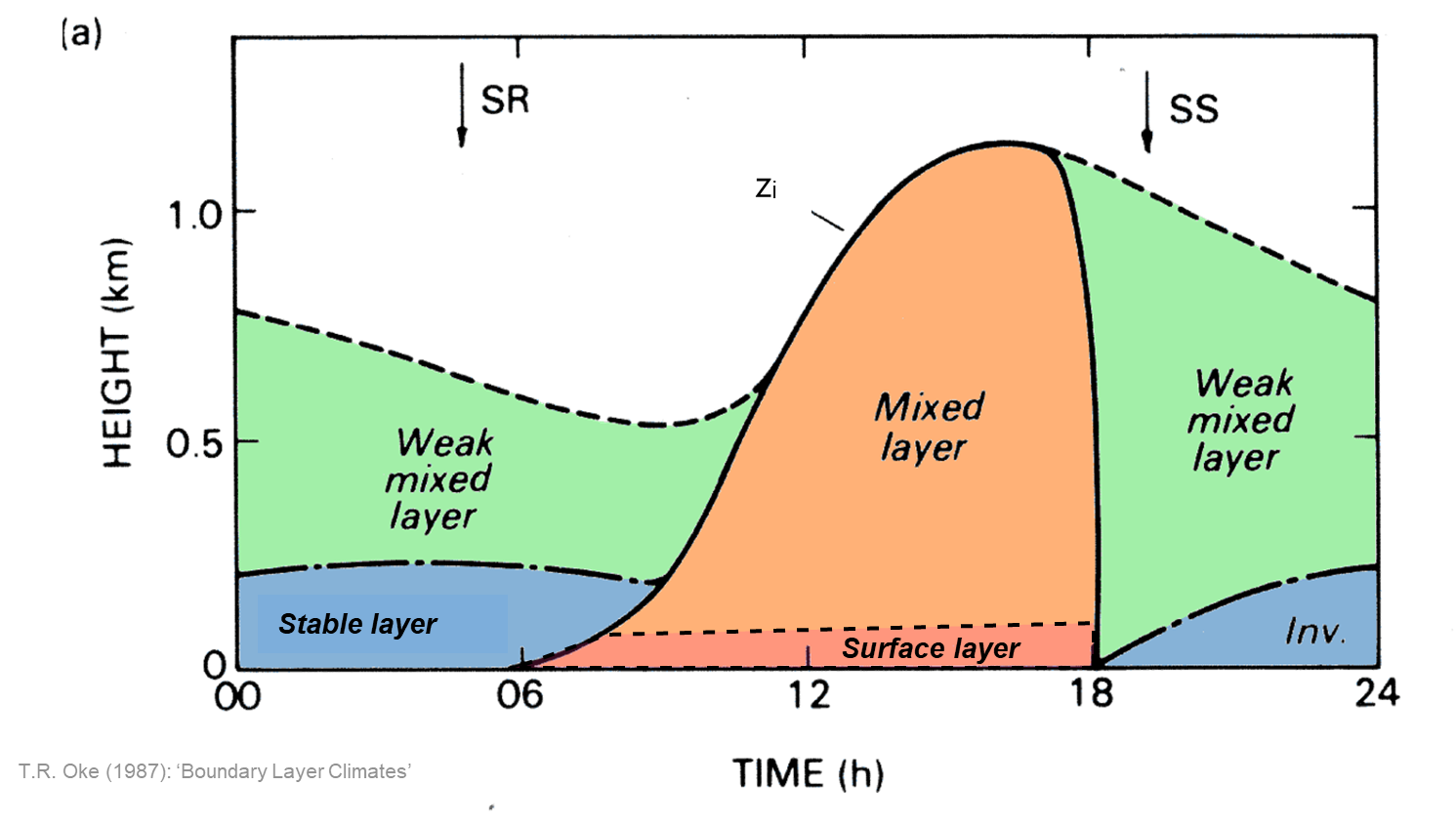
The upper boundary of the ABL (\(z_i\)) can vary substatially over the course of a day.
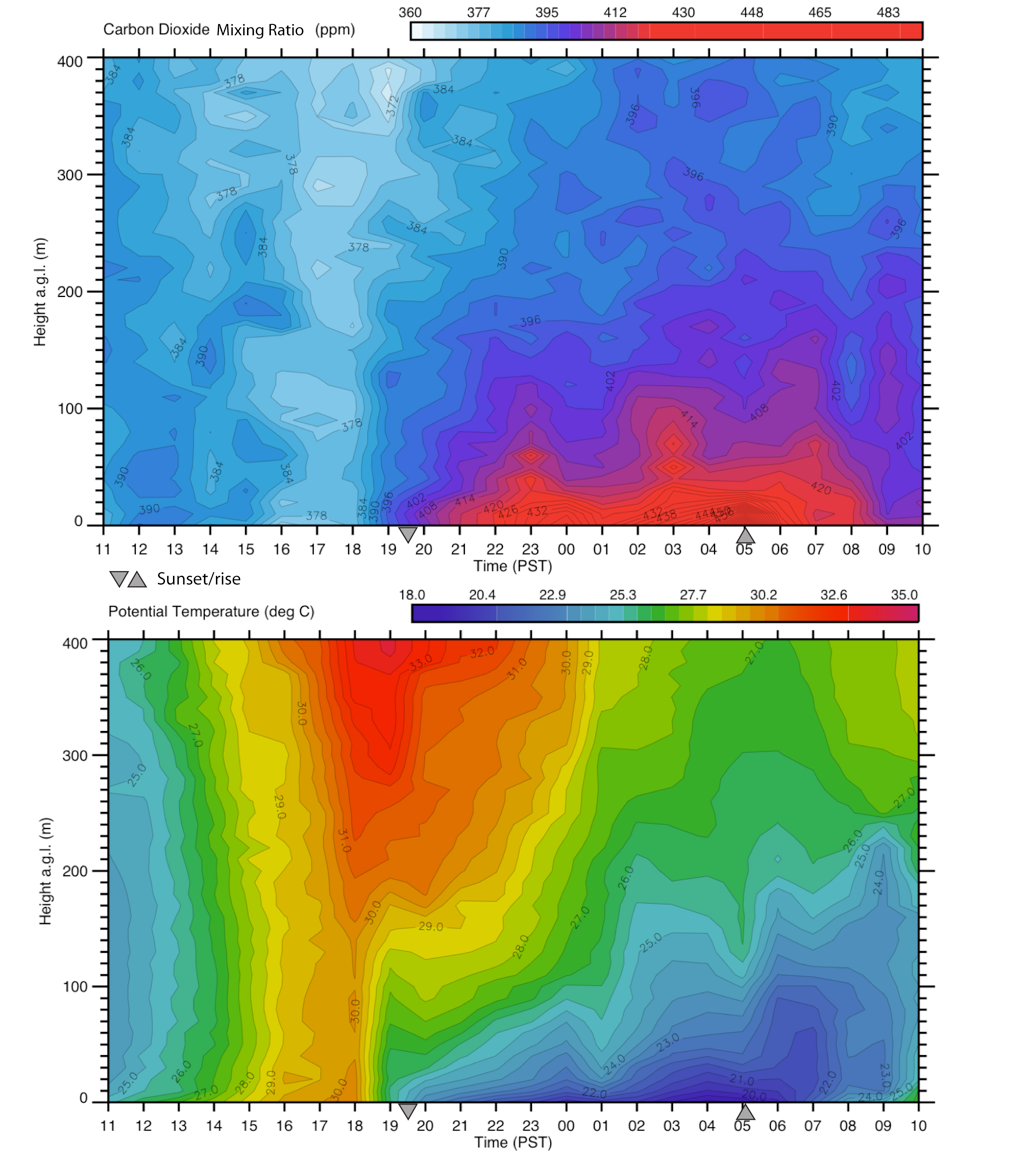
Diurnal Course of \(\theta\) and \(r_{CO_2}\) over Vancouver
The Mixed Layer (ML)
In the convective boundary layer (CBL) apart from mechanical convection close to the surface, turbulence is driven mainly by thermal convection.
- Large buoyancy driven plumes originate from surface.
- Need 10 to 15 minutes to turn over.
- Air is well mixed and \(\theta\) is approximately constant with height
- We call this layer from ~100 m up to 3 ~km the mixed layer (ML).
- Need 10 to 15 minutes to turn over.
- ML growth depends on \(H\) at surface
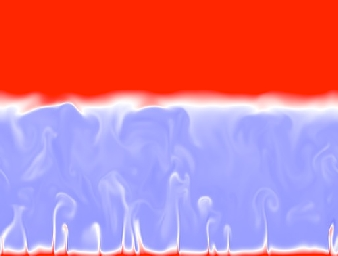
Entrainment Zone
Thermals from CBL overshoot into capping inversion at \(z_i\).
Acceleration due to buoyancy causes thermals to penetrate some distance up into stable layer, where they are repelled and returned to upper mixed layer.
- This brings downward flux of warmer, drier, cleaner, less turbulent air.
- This process is called entrainment.
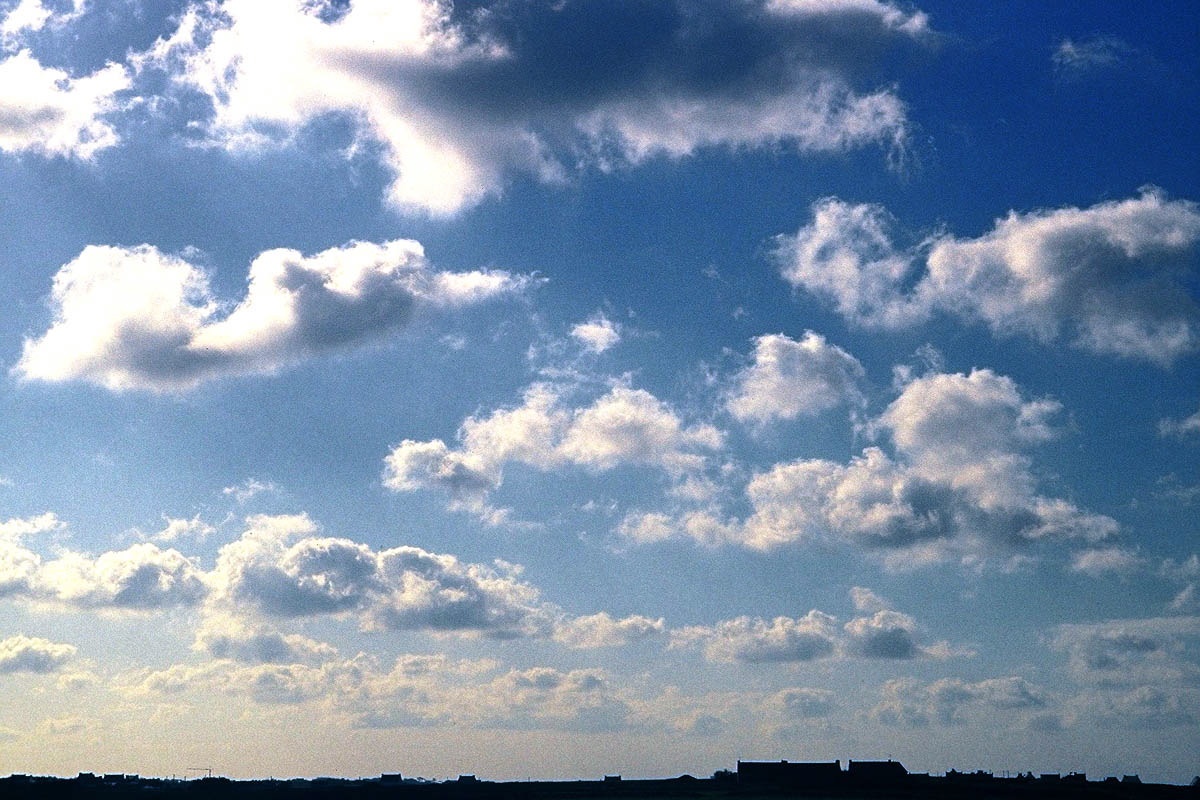
Entrainment
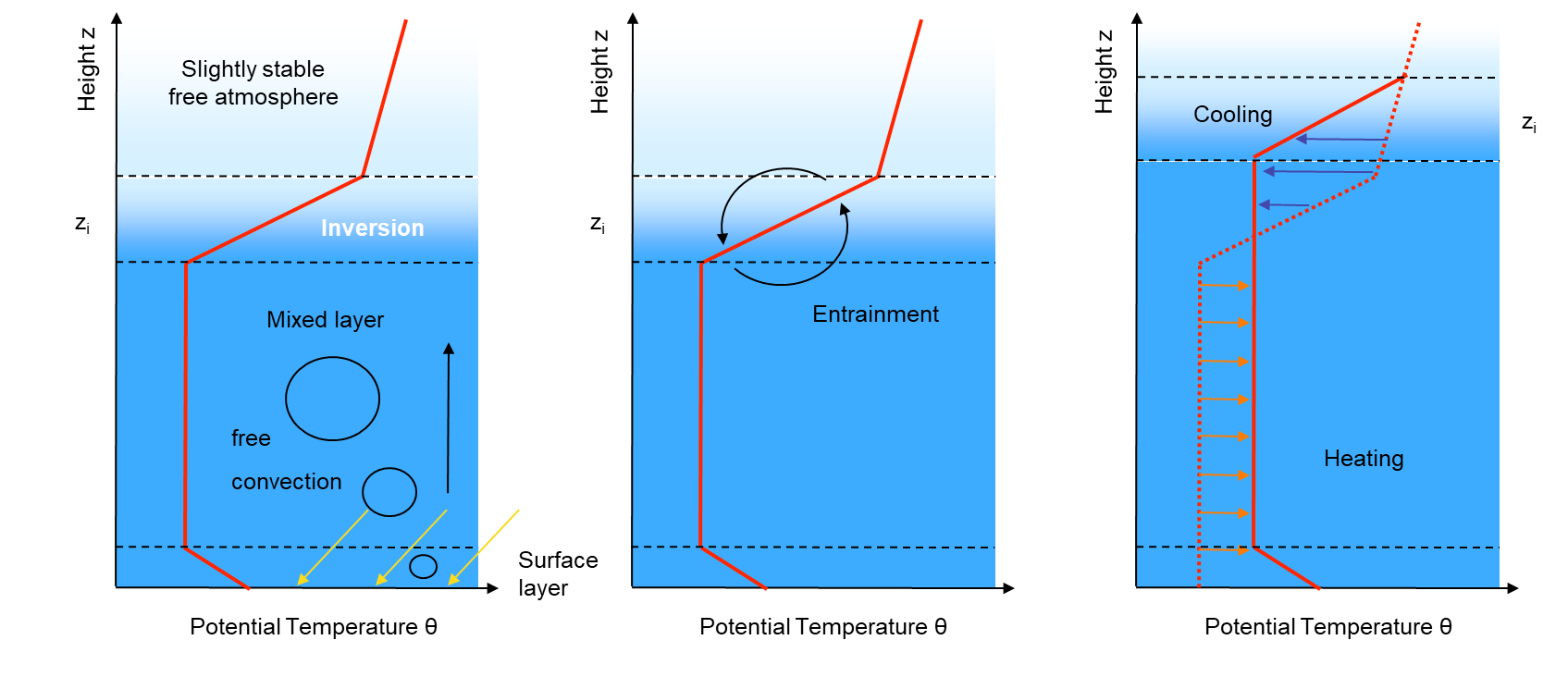
Note, ABL growth is due to both, ‘encroachment’ from surface and ‘entrainment’ from free atmosphere above.
Roll Vortices and ‘Cloud Streets’
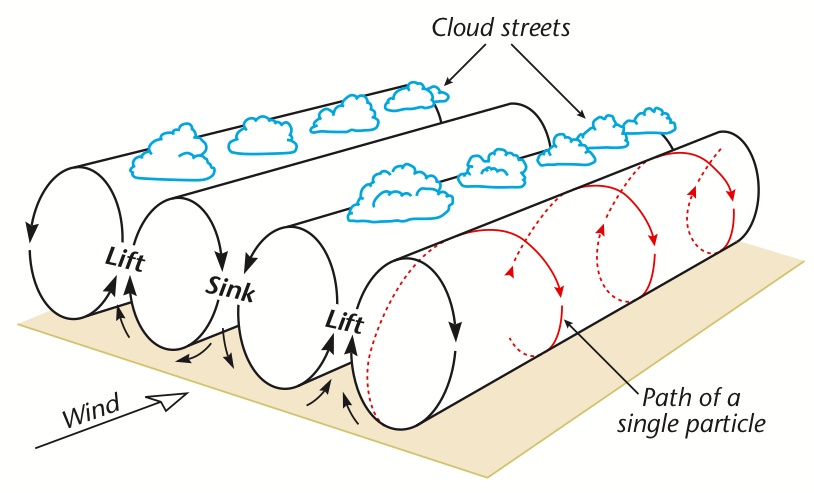
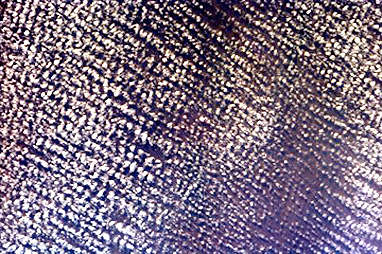
Sensible heat flux density in the CBL
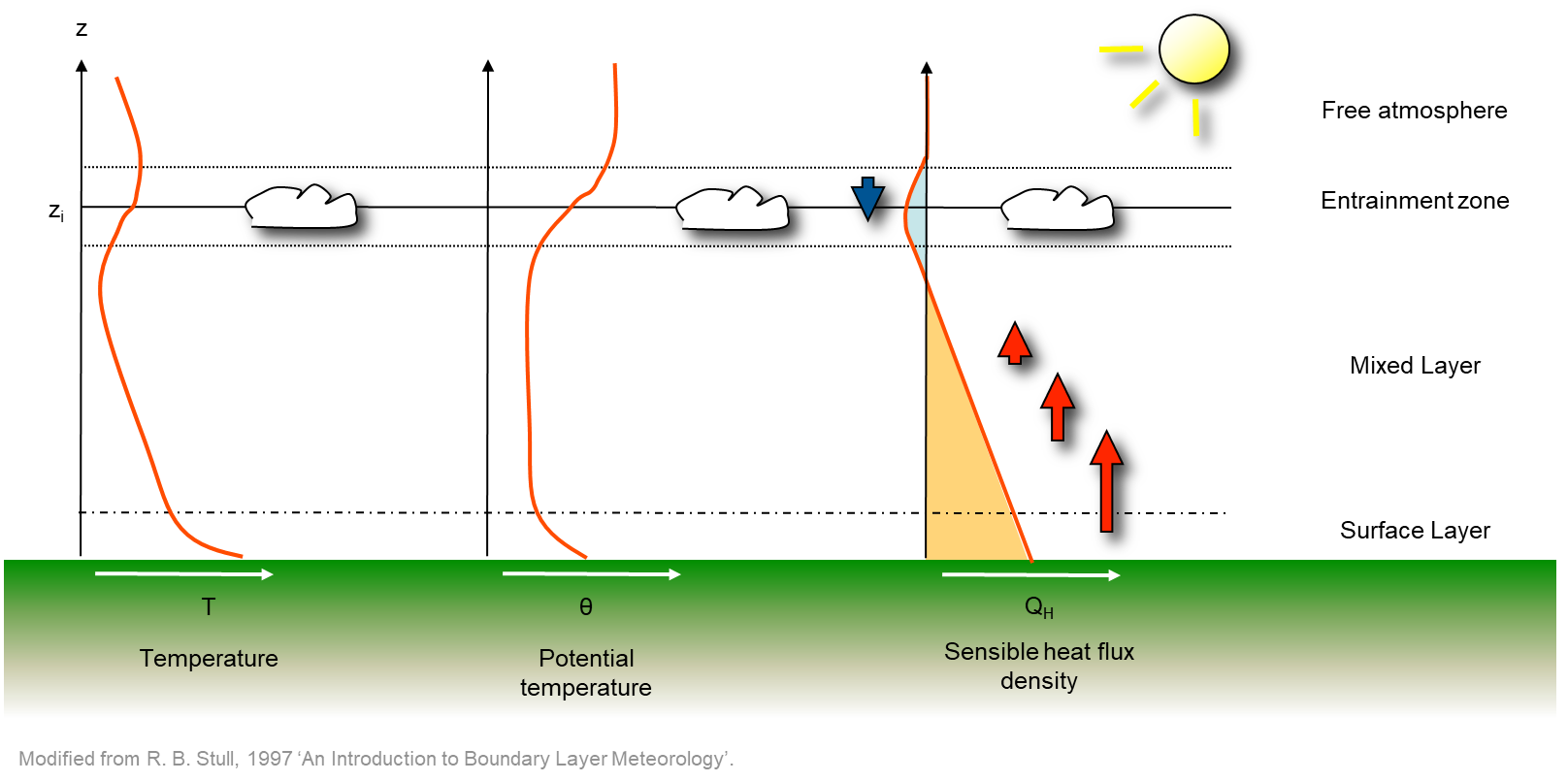
Measured vertical profiles of moisture

Moisture in the daytime CBL
- The amount of boundary layer moistening during the day depends on relative strength of:
- Surface fluxes (wetting)
- Entrainment fluxes (drying)
- \(LE\) will be a function of \(R_n\) and the gradient of \(r_{H_2O}\)
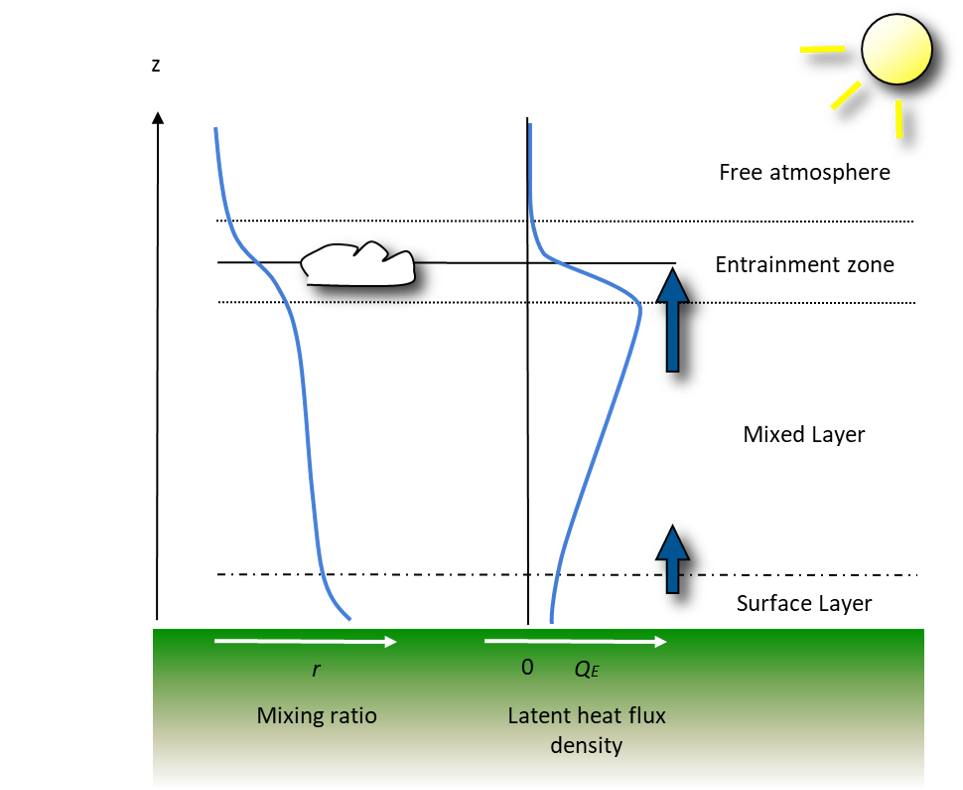
Structure of a Nocuturnal Boundary Layer
Above the stable boundary layer at the surface, weak mixing continues in remnants of previous day’s CBL, called the residual laye.
- It shows the properties of the decayed daytime mixed layer.
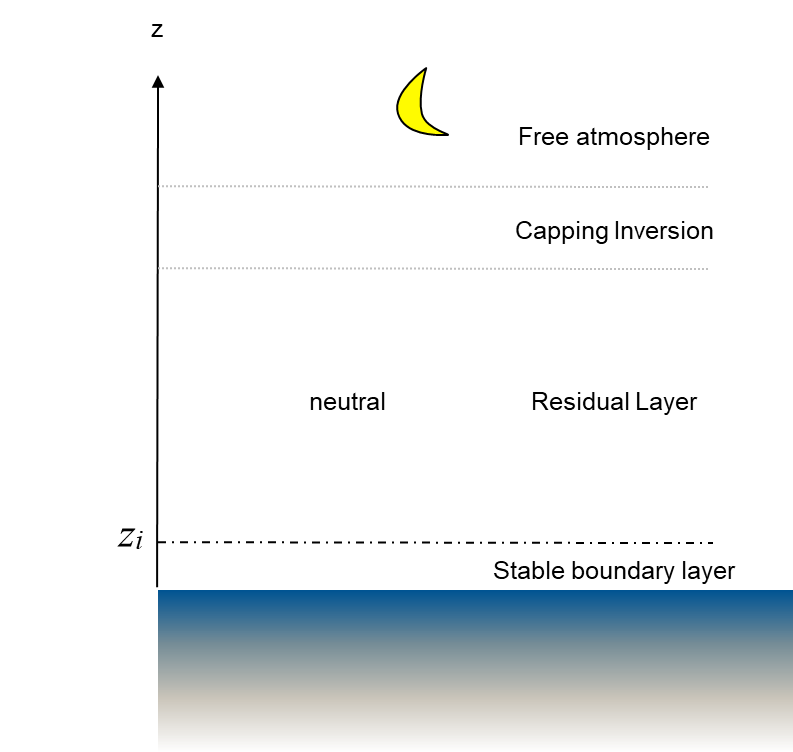
Temperatures in SBL
In the stable boundary layer surface cooling causes downward sensible heat flux.
- Typical over land at night or when warm air advected over cold surfaces (lakes, ice, etc.)
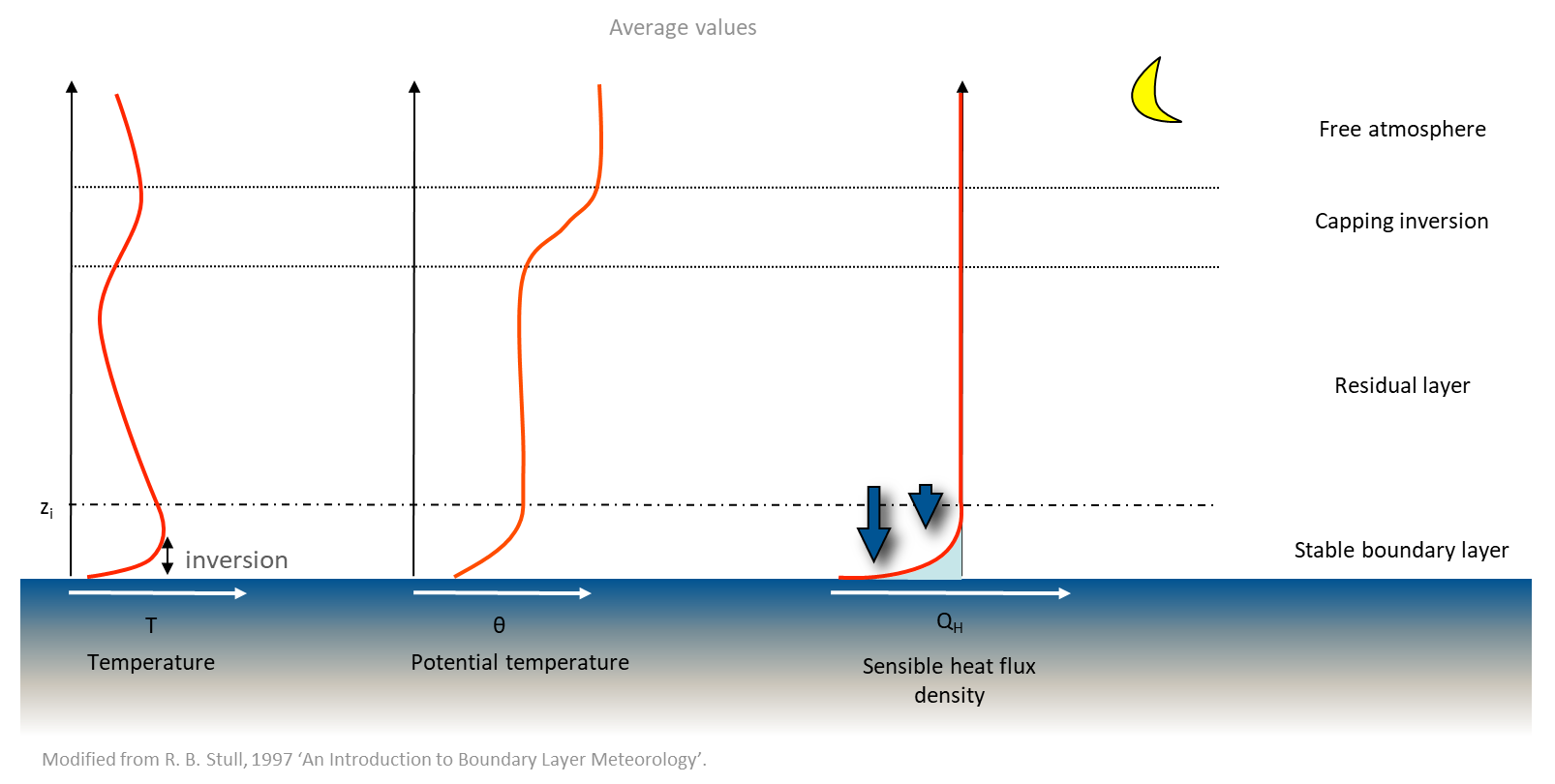
Potential temperature profile defines the depth of the stable boundary layer, but may be hard to identify top (merges) - typically 100 - 300 m on a clear sky night.
Moisture in the SBL
- At night, the stable boundary layer shows relatively small gradients in the water mixing ratio r and can be of either sign:
- Drying with height \(\rightarrow\) evaporation continues (more slowly)
- Inversion \(\rightarrow\) dew / frost will occur!
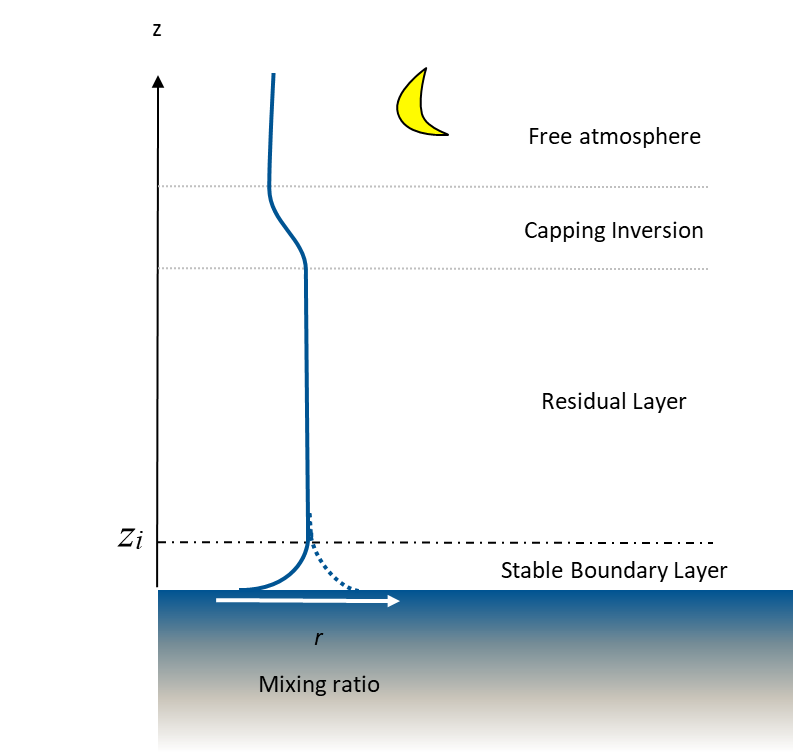
Take home points
- The Atmospheric boundary layer is responding to energetic changes of the surface, i.e.the surface energy balance.
- Thermal convection is the dominating mixing process in the daytime mixed layer. The ML grows due to encroachment and entrainment.
- A stable boundary layer with suppressed mixing develops during night and over cool surfaces (ice etc.).
- A drying flux through the entrainment zone is observed, as the free atmosphere is less humid that the ABL.